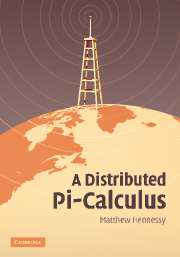1 - Inductive principles
Published online by Cambridge University Press: 05 August 2012
Summary
Throughout the book we will make extensive use of both induction and coinduction, and their associated proof techniques. Here we give a brief review of these concepts, and an indication of how we intend to use them.
Induction
Figure 1.1 contains a definition of the (abstract) syntax of a simple language of machines. Here a ranges over some set of action labels Act, and intuitively a machine can carry out sequences of these actions, and periodically has a choice of which actions to perform. Let M be the set of all machines defined in Figure 1.1. Formally this is an inductive definition of a set, namely the least set S that satisfies
stop ∈ S
M ∈ S implies a.M ∈ S for every action label a in Act
M1, M2 ∈ S implies M1 + M2 ∈ S.
The fact that M is the least set that satisfies these conditions gives us a proof technique for defining and proving properties of machines in M; any other set satisfying the conditions is guaranteed to contain M.
As an example consider the following definition of the size of a machine:
|stop| = 0
|a.M| = 1 + |M|
|M1 + M2| = |M1| + |M2|.
We know by induction that this function is now defined for every machine. Belabouring the point for emphasis let D be the domain of the size function | |, the set of elements for which it is defined.
- Type
- Chapter
- Information
- A Distributed Pi-Calculus , pp. 1 - 9Publisher: Cambridge University PressPrint publication year: 2007



